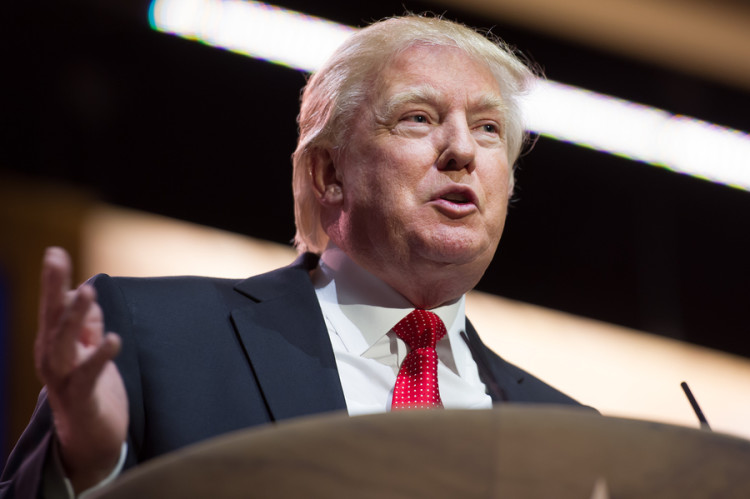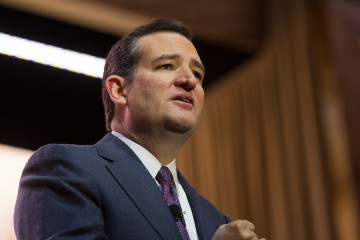Five Characteristics of a Political Populist: Stephen Mihm

©2015 Bloomberg View
NYY2NW6KLVR4
NYY2NW6KLVR4
(Bloomberg View) — It’s a recurring theme in U.S. history: Populist presidential candidates giving voice to an electorate fed up with Washington and politics as usual. Yet the three politicians wearing the label — the Republicans Ben Carson, Donald Trump and, to a lesser extent, Ted Cruz; Bernie Sanders for the Democrats — share few common characteristics beyond their self-definition as insurgents and outsiders.
Nonetheless, history tells us that populism is more than a catch-all phrase to describe any politician who claims to buck the system or be a megaphone for the popular mood. Rather, the term designates a recognizable political force with shared features across time, circumstances and ideology.
The phrase gained currency in the Gilded Age, when a rural movement known as the Farmers’ Alliance morphed into the People’s Party, which challenged the two established parties in an era of rampant inequality, devastating financial crises and a pervasive belief that the game was rigged against ordinary Americans shut out of elite circles.
Sound familiar? The Populists of the end of the 19th century (the only ones to merit a capital P) were very different from those of today, but their particular style of politics, and the vein of anger they tapped, suggests that Trump, Sanders and other insurgent candidates are tuned into discontent that takes familiar, even predictable forms.
Here are five things that make a populist a populist:
Anger: The ranks of the Populists were made up of farmers, small-town businessmen and rural people who rebelled against the power of urban elites, big banks and big business. As they struggled to survive the rise of industrialization and the changes wrought by the increasing role of finance in the 1880s and 1890s, they sought an outlet for their anger. While the Populist orator Mary Lease may or may not have told farmers that they should “raise less corn and more hell,” the story speaks to a larger truth: This was a movement fueled by rage.
Trump and Sanders offer their followers unvarnished, raw emotion rather than technocratic prowess and expertise. They don’t present a blueprint for the nation’s future beyond restoring American greatness in Trump’s case, and reversing economic inequality in Sanders’.
Cruz routinely condemns what he calls the “Washington cartel” and its grip on the levers of power.
The tone is that of an Old Testament prophet (Sanders) or the the we’re-not-going-to-take-it everyman (Trump). Both would sound familiar to the original Populists, many of whom delivered their messages without regard for accepted rituals and political niceties.
When Mary Lease darkly warned about “the bloodhounds of money who have dogged us,” listeners went wild. Such words articulated the discontent of ordinary people, as well as their desire for vengeance against newly powerful forces: speculators in wheat and other commodities who seemed to undercut the pricing power of farmers; railroads that bribed politicians; corporate monopolies that operated free of competition; and other incarnations of business run amok.
Nativism: One of the defining features of the original Populist movement was nativism.
Georgia Populist Tom Watson could have gone toe-to-toe with Trump when it came to baiting immigrants: “We have become the world’s melting pot,” he wrote. “The scum of creation has been dumped on us. Some of our principal cities are more foreign than American.” Or, “The vice and crime which they have planted in our midst are sickening and terrifying.”
Georgia Populist Tom Watson could have gone toe-to-toe with Trump when it came to baiting immigrants: “We have become the world’s melting pot,” he wrote. “The scum of creation has been dumped on us. Some of our principal cities are more foreign than American.” Or, “The vice and crime which they have planted in our midst are sickening and terrifying.”
Sanders would condemn the tone, if not the sentiment. Although he supports immigration reform, the self-described socialist has argued against further immigration from Mexico, attacking “Wall Street” and “corporate America” for wanting to “bring low-wage labor of all levels into this country to depress wages for Americans.” In the same passage cited above, Watson blamed “manufacturers” for encouraging immigration because they simply “wanted cheap labor.”
Wall Street: The Populist movement and the populists of today also broadly agree on the primary target for their anger. Long before Trump decried the carried-interest deduction, which allows some finance executives to pay the lower capital gains tax rate on their earnings (“hedge fund guys are getting away with murder”) and Sanders likened Wall Street bankers to “gangsters and loan sharks,” the Populists were railing against the depredations of Wall Street.
Then, the financial sector was held up as the antithesis of the “producing classes” that actually made things. More recently, Trump has presented himself as a builder who, unlike hedge fund managers, didn’t just “shift paper around” and “get lucky.” His forbearers assailed the “Chicago grain gamblers” who made money betting on the futures market; and “all the classes that live by usury of any kind.”
Sanders, meanwhile, has vowed that one of his first actions as president would be to appoint “a special committee to investigate the crimes on Wall Street.”
Today, Trump is channeling the anger of ordinary Americans who feel that they’re playing by the rules, serving as productive members of the economy, while gamblers on Wall Street are making fortunes. Even though he is an ostentatious billionaire, he has forged a compelling connection to ordinary “producers” by talking about his experience as a real estate developer. He may not work with his hands, but he makes tangible things.
Religious Prejudice: Populism often betrayed an anti- Semitic tinge as “Jew” and “banker” became interchangeable in political discourse. This in turn often led to the most lurid ravings of the movement’s thinkers. These include works such as Sarah Emery’s “Seven Financial Conspiracies Which Have Enslaved the American People,” published in 1894.
Emery’s book combines numerology (with a starring role for the number seven), thinly veiled anti-Semitism (repeated swipes at “Shylocks”), and full-blown conspiracy theories. Yet it still sold 400,000 copies within a few years, making it arguably the most Populist tract of the era.
The anti-Semitism of the original Populists has been played down by some left-leaning historians who admire the movement’s social message and are eager to rescue its reputation. But just as Trump has been criticized for an anti-Muslim tone at his rallies, anti-Semitic tirades were a frequent feature of the discourse of the original Populists. Mary Lease, for example, once described President Grover Cleveland as “the agent of Jewish bankers and British gold,” echoing a 19th century meme that conflated anti-Semitism and Anglophobia.
Carson has been criticized for stating that he didn’t believe a Muslim could be president, echoing the accusation of split-loyalties that has been leveled at Jews and other minorities almost since the founding of the Republic.
Conspiracy Theories: Simplistic, but highly compelling, explanations — such as the influence of an evil cabal — are presented to account for profound and unsettling events or changes in society. Not surprisingly, similarly outlandish ideas are in vogue now. In one poll, 61 percent of Trump supporters said they believed President Barack Obama wasn’t born in the U.S. — a belief cultivated by Trump himself.
For all the shared characteristics, today’s candidates aren’t merely descendants of the Populists, much less the presumptive leaders of a new Populist movement. To see too many similarities would be to confuse the messenger for the message. Nonetheless, the rises of Trump, Sanders and Carson may — though none is likely to win his party’s nomination, never mind a general election — be a leading indicator that another populist moment or even a third party is close at hand.
It’s worth remembering that these movements aren’t solely fueled by irrational anger but also left behind a more positive legacy: reform proposals that were mocked in their time for being too radical but eventually became law.
This column does not necessarily reflect the opinion of the editorial board or Bloomberg LP and its owners.
To contact the author of this story: Stephen Mihm at smihm1@bloomberg.net To contact the editor responsible for this story: Max Berley at mberley@bloomberg.net
For more columns from Bloomberg View, visit http://www.bloomberg.com/view
For more columns from Bloomberg View, visit http://www.bloomberg.com/view







No Comment